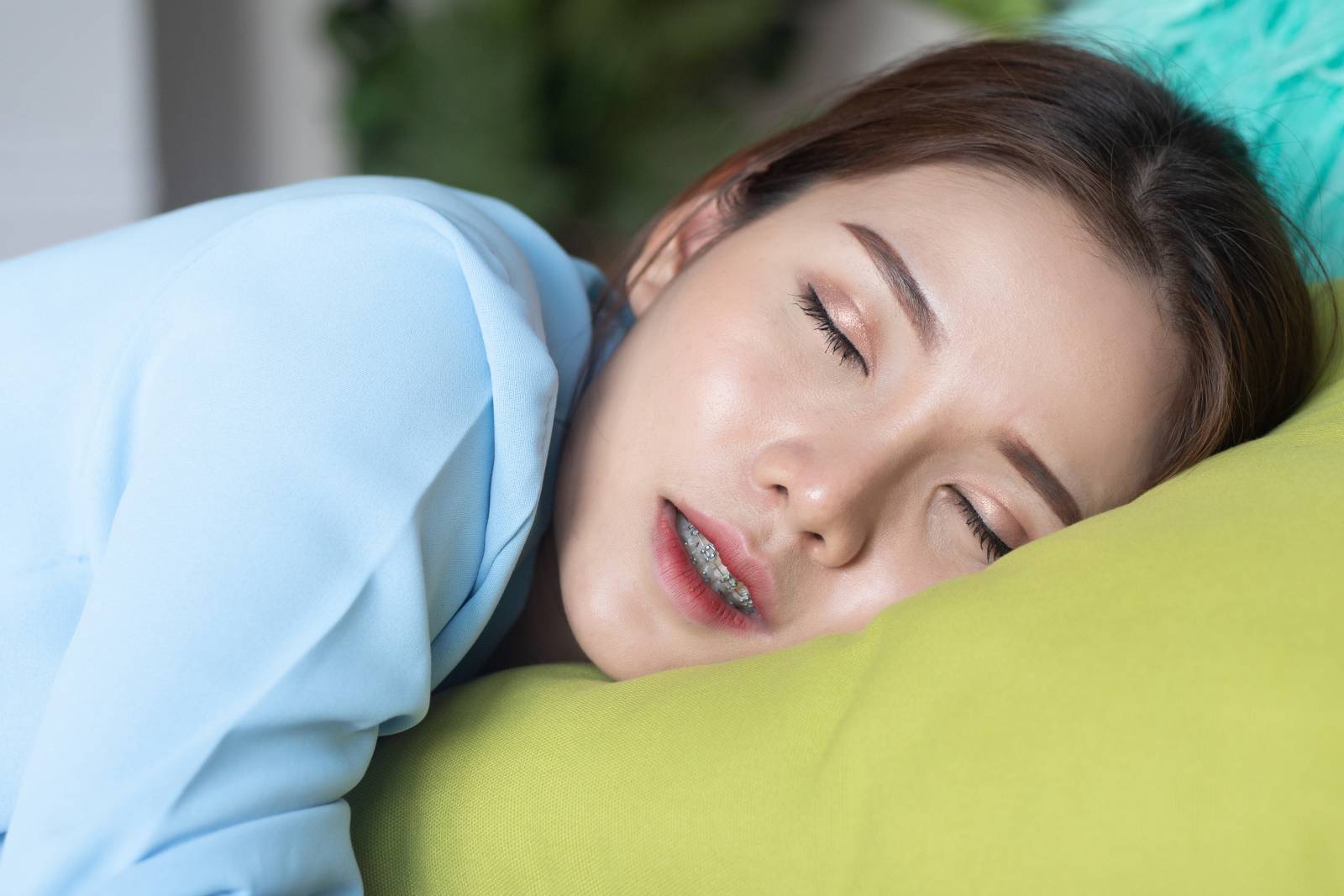When Breathing and Smiles Connect
Most parents bring their kids to the orthodontist, thinking about crooked teeth or crowded smiles. What often surprises families is that orthodontics can also play a role in something as important as breathing.
If your child snores at night, sleeps restlessly, or often breathes through their mouth, you may not connect that to orthodontics. But in some cases, the way teeth and jaws grow can affect how much space there is for air to flow. That means braces and other orthodontic treatments can sometimes do more than straighten a smile — they can support better breathing and sleep.
Why Breathing Problems Happen
Breathing issues at night often come from a blocked or narrowed airway. In kids, this can sometimes be caused by enlarged tonsils or adenoids, but jaw growth and tooth position also matter.
A narrow upper jaw, for example, doesn’t just crowd teeth. It can also make the roof of the mouth higher and the nasal passages smaller, leaving less room for air to pass through. If the lower jaw sits too far back, the tongue can crowd the throat, which may make snoring or breathing pauses more likely¹.
A Family Story
When Emma first came in for braces, her parents were focused on her crowded front teeth. During the visit, they also mentioned that she snored so loudly at night it often woke her younger sister. Emma sometimes seemed tired during the day, even after what should have been a full night’s sleep.
Her orthodontist recommended a palatal expander to make room for her teeth. Over time, Emma’s smile widened — and so did her airway. Her parents noticed she snored less, her sleep was more peaceful, and she had more energy in the morning. For Emma, orthodontics improved more than just her smile.
Stories like Emma’s are not unusual. While orthodontics does not cure sleep apnea on its own, it can make real differences in how comfortably a child breathes and sleeps.
What Sleep Apnea Looks Like in Kids
Obstructive sleep apnea (OSA) happens when the airway becomes blocked during sleep. Kids with OSA may snore, toss and turn, or even pause in their breathing for a few seconds at a time. During the day, they might seem unusually tired or may not want to stay still for a few seconds; they may also be irritable or have trouble focusing in school. It is also common to notice the kids presenting tooth wear due to dental grinding during sleep. Kids with breathing problems during their sleep, often extend their neck back (moving the chin far from the chest), as an attempt to breath better.
While not every child with crooked teeth has sleep apnea, and not every child with sleep apnea needs orthodontics, the two can overlap. Orthodontists are trained to recognize when jaw and tooth problems may be part of the picture¹.
How Orthodontics Can Help
Orthodontics is not a cure for sleep apnea, but it can improve the space available for breathing. Different treatments may help depending on the child’s needs:
- Rapid Maxillary / Palatal Expander (RPE / RME): A device that gently widens the upper jaw. By making the mouth wider, RME also creates more room in the nose, which can make breathing easier².
- Functional Appliances: Special devices used in growing kids to guide the lower jaw forward. This opens up space behind the tongue and can help reduce airway crowding³.
- Protraction or Expansion: In some cases, moving the upper jaw forward or widening it creates more space in the back of the throat⁴.
- Braces or Aligners: While their main role is aligning teeth, they also improve how the bite fits together, which may reduce habits like chronic mouth breathing.
The key takeaway is that orthodontics can be one piece of the puzzle in helping kids (and adults) breathe more comfortably.
What the Research Shows
Over the last decade, researchers have studied how orthodontics affects airway health. Some of the findings include:
- Kids who had their upper jaw widened with RME showed an increase in airway size and easier nasal breathing².
- Functional appliances used in children with “set-back” lower jaws created more room for air behind the tongue³.
- In children diagnosed with sleep apnea, orthodontic expansion often led to measurable improvements in breathing during sleep⁴.
- A 2022 review pulled together many studies and concluded that several orthodontic methods — from expanders to jaw-guiding devices — tend to improve airway space⁵.
- Experts now suggest orthodontists should be part of the team that screens for airway issues, even though diagnosis and medical treatment still belong with pediatricians or sleep specialists⁶.
Everyday Benefits Families Notice
For parents, the benefits of airway-focused orthodontics are not measured in charts or x-rays but in daily life. After treatment, many families notice:
- Quieter nights: Less snoring and fewer restless movements.
- More energy in the morning: Kids wake up refreshed instead of groggy.
- Better focus at school: Teachers sometimes report improvements in attention once sleep quality improves.
- Fewer headaches: Poor sleep and jaw strain can contribute to morning headaches, which often decrease after treatment.
- Happier moods: Well-rested kids tend to be calmer and less irritable during the day.
For adults, orthodontics can complement medical treatments for sleep apnea. Correcting bite problems can reduce risk factors, make oral appliances fit more comfortably, and support overall airway health. Many adult patients report less tension in their jaw, fewer headaches, and more restful sleep once their bite is corrected.
The Bigger Picture
It’s important to be clear: orthodontics alone cannot cure sleep apnea or replace medical care. But it can support healthier breathing by widening jaws, improving bite balance, and creating more space for air. For many families, this means orthodontics is about more than smiles. It is about health, energy, and confidence.
The Bottom Line
Orthodontics has a surprising connection to breathing and sleep. By expanding jaws, guiding growth, and aligning teeth, orthodontists can sometimes help reduce airway problems that contribute to snoring or sleep apnea.
If you’ve noticed your child struggling with restless sleep, mouth breathing, or snoring, an orthodontic consultation may be a helpful step. At Enjoy Orthodontics, we look at the whole picture: not just how teeth look, but how the jaws and airway are working together. A healthy smile and healthy breathing often go hand in hand.
References
- StatPearls. (2023). Obstructive Sleep Apnea in Children. Retrieved from https://www.ncbi.nlm.nih.gov/books/NBK557610/
- Zhao, Y., et al. (2022). Effects of rapid maxillary expansion on upper airway volume: A retrospective study. Journal of Clinical Medicine. Retrieved from https://pmc.ncbi.nlm.nih.gov/articles/PMC9973120/
- Valiathan, M., et al. (2016). Impact of different orthodontic modalities on airway dimension in growing patients. Retrieved from https://pmc.ncbi.nlm.nih.gov/articles/PMC4795879/
- Choi, J., et al. (2023). Effects of rapid maxillary expansion on airway dimensions in children with OSA. Retrieved from https://pmc.ncbi.nlm.nih.gov/articles/PMC9954808/
- Garcez, A., et al. (2022). Upper airway changes with orthodontic methods: A systematic review. Applied Sciences. Retrieved from https://www.mdpi.com/2076-3417/12/2/916
- D’Onofrio, L., et al. (2024). Role of orthodontists in pediatric obstructive sleep apnea: A mini-review. Frontiers in Oral Health. Retrieved from https://www.frontiersin.org/journals/oral-health/articles/10.3389/froh.2024.1486573/pdf





